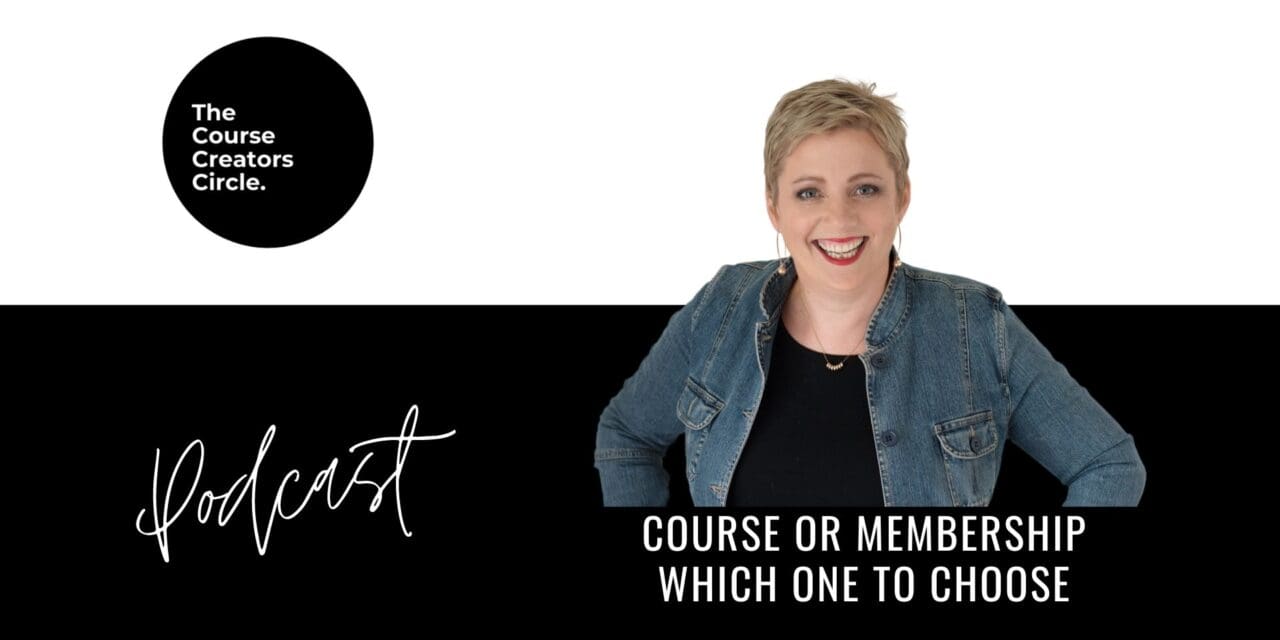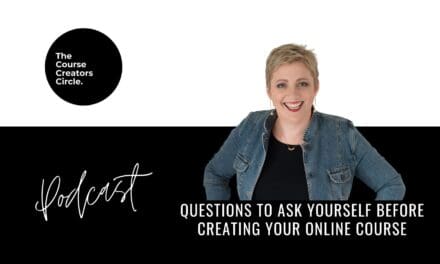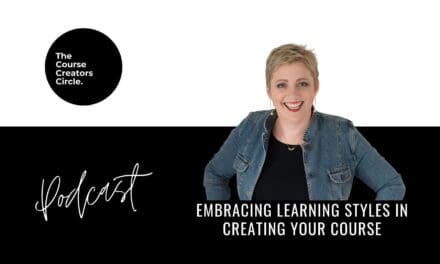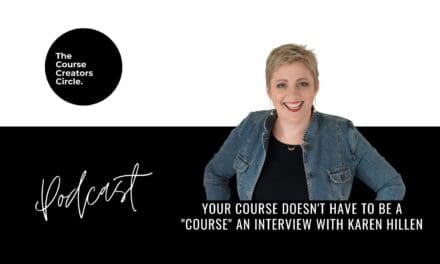When you are on your course creation journey, you come across this question quite often, course or membership? And then it will be quickly followed by which one is better?
There is a place for both courses and membership within your offering. As a course creator myself, I think we should be doing both.
The reason I think we should be doing both is we’re going to create standalone courses. And once we’re ready to bring in a membership model, means that we can bundle a series of those courses together, add in some time from us, and be able to create a community around our courses.
First, let’s look at the difference between an online course and a membership?
What are online courses?
- An online course is normally solution-level based. A student or client has a problem. They come in and take your course. At the end of the process, they’ve got their answers.
- Where courses have their place within the market is when people maybe don’t know who you are. They’re wanting to understand who you are, how you teach, and how they learn, and they’re not ready for that membership commitment.
- Courses are well suited for topics when the students want to learn a tangible skill or achieve a measurable result by the end of the course.
- Courses work for project-based tutorial content really well, but they also work in the opportunity to throw them into memberships for that sort of content.
- Online courses are best for evergreen content that changes slowly, not need updates all the time.
- They’re easy to validate your ideas. You can have a look at YouTube videos, webinars, and other video-based mediums, and you can start to create lead generations around them and lead directly to the course. You’ve got the pain point, and the solution is the course at the end.
- You’ve got high potential in being able to do sales prices. There’s minimal post-launch maintenance and it comes down to marketing compared to membership sites.
- Revenue growth is limited to new sales. There’s no recurring income. Sales typically come in a cycle and revenue can actually be quite difficult to predict because you don’t know how the cycle is going and they tend to only come when you push it.
- It can be challenging to sustain engagement and participation when students are passively involved in a self-paced learning course. They’re not interacting with a teacher and they’re not part of a community.
- The access is normally granted for a short period, and it’s all about giving the student a solution and a win. And there are going to be students who only want a solution and a win to their problem.
What are memberships?
- Memberships, on the other hand, are all about community. They’re about access to you as a teacher.
- Memberships bundle a series of things together and they fit well when you’ve got a topic that bridges multiple skills or multiple areas of achievement.
- Memberships are good for clients who need a little bit of guidance along the way or a little bit of personalisation but they’re not ready for coaching.
- Memberships are great for creators who may want to expand or pivot upon their expertise and their offerings in the future.
- Memberships are great because they are community-based and this community tells you what they want to learn next. And that’s amazing because you’re able to work with your people.
- It’s easier to predict revenue than it is with online courses because you’ve got recurring income and you can pretty much get a bit of a gauge of how many members are going to keep renewing each and every month.
- Memberships are normally done on a monthly, quarterly, or annual basis.
- There’s a less upfront cost to produce because you’ll have to produce a series of courses. You can start making content along the way.
- Members get access to you and to the community.
- A membership is lower priced than the cost to buy all the courses themselves. You’ll put the bundle together, but the opportunity is to attract more people and it’s an ongoing payment. You want to be able to make sure that a year’s access is going to give them all of the courses plus some bonuses from you.
- Inside our memberships, we tend to offer a community space where they can come attend live sessions and have Q&A sessions with me and Clive.
So which one is better? Course or Membership?
There is no winner. The winner is what’s going to work for you and your business. If you don’t want to turn up for a community and you just want to keep selling courses, then maybe self-paced evergreen courses are for you.
If you’re like me and you love the teaching component, you love being in front of your students, then membership is for you. You can still sell courses one-off, but also have them add value to your membership and you’re able to turn up and learn from your students along the way.
When you are starting this journey out, maybe it is advisable to start with courses first, then bring your memberships into your journey.
There are no rules when it comes to course creation in this space. The important thing is what best suits you and your students. Ask your people, do they want your guidance? Do they want you alongside them as they learn? Or are they happy to learn self-paced?
And then ask yourself, am I happy to turn up and help and support a community? Am I going to give them quizzes? Am I going to give them prompts? Am I going to give them emails along the way? And if you can do that, then I would be looking at running courses and running a membership base as well.
Final takeaway
Both standalone courses and memberships can be great options depending on the subject matter you’re trying to teach, your needs, and the expectations of your students.
An online course is better for specific topics that can follow a set number of lessons to achieve an end result, without the need for ongoing additional content. A membership site is better if you want to create ongoing content, recurring revenue, and a strong community.
Highlights
[0:00] Introduction
[0:44] Course or Membership — Which one is better?
[1:15] What are online courses?
[2:10] Online courses are best for evergreen content
[2:20] Courses are easy to validate
[2:35] Minimal post-launch maintenance
[2:50] Courses revenue potential is limited
[3:10] Challenging for engagement
3;25 Courses deliver solution and a win
[3:40] What are memberships?
[3:55] Memberships can have more personalisation
[4:00] Memberships are good for expanding to other topics
[4:12] Memberships are community-based
[4:23] Memberships income are easier to predict
[4:45] Memberships are exclusive
[5:05] Memberships are lower-priced because of bundling
[5:30] Live and Q&A sessions can be included in memberships
[5:45] What’s the winner?
[6:25] When you’re starting on your journey
[6:45] There are no rules
[6:50] My number one tip
[7:15] One final tip
[7:40] Check out our Course Creators Circle Membership
[8:05] Please subscribe to The Course Creators Circle Podcast
Resources Mentioned in the Podcast
Sponsored Content: This post is sponsored content and the placement has been paid for or contains affiliate links. For complete information, see our terms of use.
Get More Course Creation Tips as a VIP Member
As a Course Creators Circle Member you get access to our Course Creation Process from getting that content out of your head right through to launching and marketing your courses.
With access to our Course Creation VIP, you can ask all your course creation questions from Course Creation Expert, Linda Reed-Enever.



















